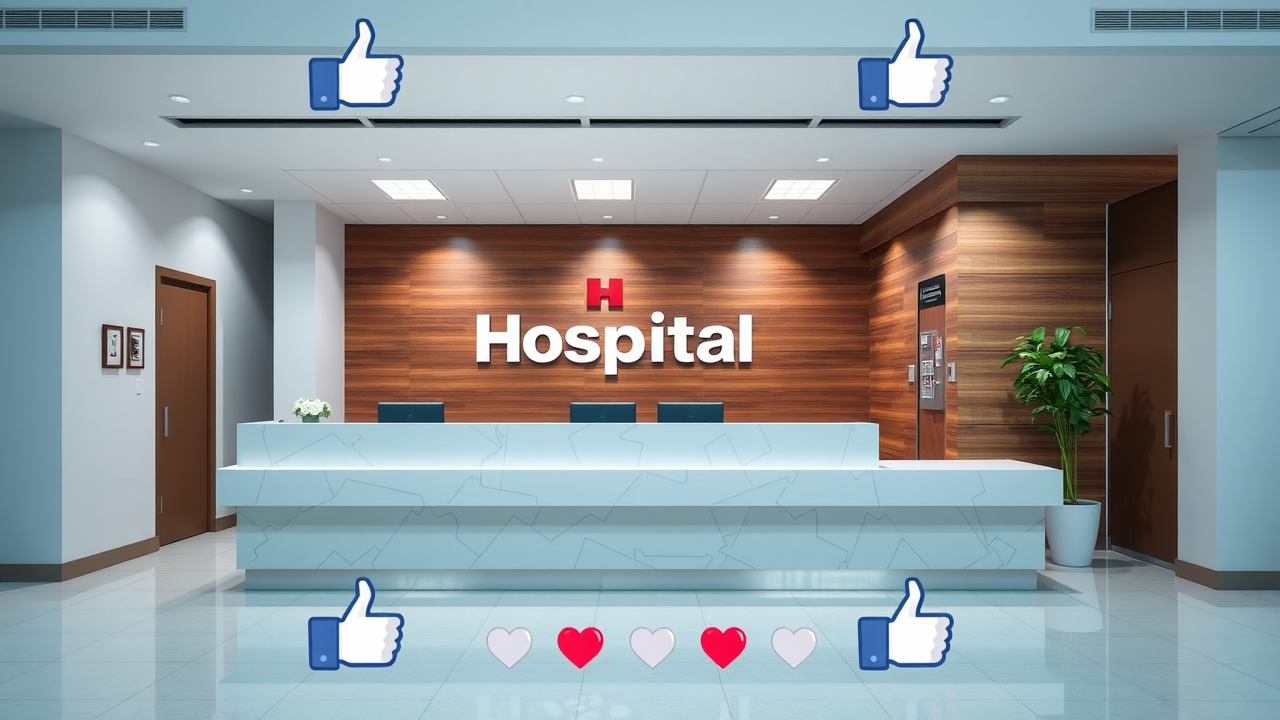
Did you know only 15% of medical practices make the most of social media cross-posting to engage local audiences?
In today’s digital world, medical professionals must choose between two powerful strategies—cross-posting the same content across all platforms or customizing posts for each site. Deciding which approach is right for your practice could mean the difference between a thriving online presence and getting lost in the noise. If you’re ready to hit the mark with effective social media management, discover which method will help your medical practice stand out, connect with local patients, and grow.
Despite the widespread use of social media by healthcare providers, only a small percentage fully leverage cross-posting for medical practices to maximize reach and engagement. Many clinics and physician groups maintain social media accounts, but simply having a profile isn’t enough to build a robust media presence. According to recent studies, local practices that invest in strategic cross-posting or tailored content consistently observe higher patient engagement, stronger brand awareness, and better community connections.

Understanding Cross-Posting for Medical Practices on Social Media
What is Cross-Posting for Medical Practices?
Cross-posting for medical practices means sharing the same piece of content, like a blog post, update, or patient success story, across multiple social media platforms such as Facebook, Instagram, Twitter, and LinkedIn. This strategy helps maximize reach with minimal effort, allowing medical professionals to maintain an active media presence without crafting different messages for each media account.
For example, if a medical practice produces an educational blog post on brain surgery, cross-posting would involve sharing the same link and summary text across its social media platforms simultaneously. While this approach saves time, it may not always address the unique audience preferences and communication styles required by each individual social media platform.
Cross-posting lets medical professionals update their media accounts efficiently and consistently. However, the risk of sharing identical content without considering platform-specific nuances can reduce engagement levels and limit the effectiveness of your social media marketing efforts.
How Medical Professionals Use Social Media Platforms Differently
Medical professionals, including doctors, nurses, and administrators, use social media for more than just entertainment purposes—they share treatment advice, public health alerts, fun office updates, and community events to diverse audiences. Each social media platform has its own culture and format. For example, Instagram thrives on compelling visuals and behind-the-scenes snapshots, while LinkedIn favors professional tips and business news relevant to health care.
A successful medical practice adapts its message to fit both the platform and the audience. On Facebook, patient care testimonials, local event promotions, and community health campaigns tend to do well. Over on Twitter, timely updates, fast news, and medical practice announcements can quickly capture attention. Tailoring content for different media accounts helps ensure your post actually connects with followers and doesn’t get ignored as just another generic update.
On platforms like YouTube, longer educational videos covering topics like neurosurgery blog insights can be showcased to build credibility. Meanwhile, short-form video content is highly effective on TikTok or Instagram Reels. Knowing how each social media platform operates is important for crafting messages that foster real patient engagement and reflect your brand’s values.
To further refine your approach, it’s helpful to explore proven frameworks for building a strong online presence. For actionable steps on optimizing your social channels, consider reviewing this comprehensive social media strategy guide for medical practices , which covers platform selection, content planning, and engagement tactics tailored to healthcare professionals.
Benefits of Cross-Posting Content for Medical Practices
The primary benefit of cross-posting is time savings. Instead of preparing separate content for each media platform, you can schedule a single update across all your social media accounts—freeing healthcare staff to focus on patient care and practice operations. Consistent messaging across platforms also enhances brand recognition and ensures that important updates reach as many patients as possible.
Cross-posting is particularly valuable for smaller medical practices with limited staff or no in-house social media manager. It allows these practices to maintain an effective social media presence and promote patient resources, health care tips, and services without slipping behind competitors. Cross-posting makes it easier to track engagement metrics across platforms, providing useful data for refining your broader media marketing strategy.
However, while cross-posting offers efficiency, it's important to balance convenience with the engagement needs of your audience. Striking this balance can help your medical practice get the most out of every media account you manage, without sacrificing the authenticity or relevance of your communication.

Platform-Specific Strategies for Medical Practice Social Media Success
Why Platform-Specific Content Matters in Social Media
While cross-posting offers convenience, developing platform-specific content can deliver stronger engagement and loyalty. Each social media platform has its own best practices, formatting options, and user expectations. For example, memes might get shared widely on Facebook but could seem unprofessional on LinkedIn, where a medical practice wants to position itself as an expert.
By tailoring content to each platform, medical professionals can improve their social media presence and demonstrate a deeper understanding of their audience’s interests. Platform-specific posts often get higher engagement, more meaningful comments, and better sharing—advantages that generic, identical content can’t always deliver. The key is to match the tone, length, visual style, and message to each network for effective social media performance.
Understanding Each Social Media Platform for Medical Practice Marketing
Let’s take a closer look at how vital it is to know the unique characteristics of each social media platform for medical practice media marketing:
Facebook: Suited for community engagement, event promotions, educational blog posts, and patient care stories. Best for reaching families and older adults.
Instagram: Focus on health care visuals—before-and-after treatments, staff spotlights, medical office updates—using stories and reels for patient interaction.
Twitter/X: Timely news, health tips, links to neurosurgery blogs, and live Q&A sessions with medical professionals. Preferred channel for quick, concise updates.
LinkedIn: Professional announcements, staff awards, practice website launches, health care trends, and networking with other providers.
YouTube: Longer videos about patient care procedures, expert interviews, or explainer videos about complex medical topics like brain surgery or neurological surgeries.
By understanding these unique aspects, your practice’s social media manager can build a powerful, effective social media marketing plan that resonates with patients and professionals alike.

Key Differences: Cross-Posting vs. Platform-Specific Content for Medical Practices
Identical Content Across Social Media Platforms: Risks and Rewards
When you share identical content across multiple platforms, your medical practice benefits from less time spent creating, editing, and scheduling. This approach keeps your social media presence active, ensuring that all patients are kept in the loop about new procedures, scheduling changes, or blog post updates. However, this “one-size-fits-all” tactic has notable risks, including lower engagement and the possibility that your message may not hit the mark with different audiences.
Platforms may penalize accounts that share repetitive, inauthentic content, resulting in reduced post visibility. Generic messaging could fail to adhere to each network’s content guidelines, leading to compliance risks. Carefully consider whether the time saved is worth the potential loss in patient connection and brand differentiation.
That said, if done thoughtfully—with slight tweaks for tone or image sizing—cross-posting can still work for time-strapped practices. For example, sharing the same infographic across social media platforms, but changing the caption for Instagram’s visual audience and expanding the blurb for Facebook, is a smart compromise.
Audience Engagement: Tailored Social Media Content for Different Media Platforms
Tailored content delivers higher audience engagement—posts that speak directly to the interests, concerns, and needs of your patients get more likes, shares, and comments. A medical practice sharing a fun office update on Instagram may add a call to action for patients to share their wellness stories in the comments. On Facebook, the same topic could be reworked as a community poll or discussion thread.
Audience engagement also grows when posts are in sync with the platform’s best features, such as Instagram Stories, Facebook Live, or LinkedIn Articles. For neurological surgeons, a detailed technical blog post on surgery approaches can be published on LinkedIn, while a shorter summary with visuals works for Facebook followers. Adapting your posts not only drives up interaction but also builds stronger relationships with current and prospective patients.
Practices that use platform-specific strategies report better patient awareness, more appointment bookings, and a positive impact on their reputation—key goals for any health care provider seeking to improve their media marketing outcomes.
Managing Social Media Presence for Local Medical Practices
Consistent social media management is important for sustaining an effective online reputation. For many local practices, the challenge is finding the right balance between efficient posting (cross-posting) and meaningful engagement (platform-specific updates). With staff dedicated primarily to patient care, not media management, automated cross-posting tools may seem like an attractive solution, but personalization still matters.
Local practices benefit most by assigning a social media manager, even if on a part-time basis, to oversee the content calendar, monitor feedback, and respond promptly to patient questions. Tools like Hootsuite or Sprout Social can help manage posting schedules across multiple media accounts, track analytics, and adjust strategies for better reach.
Ultimately, the best media presence is one that reflects your medical practice’s unique approach to patient care and builds lasting community trust.

Efficient Social Media Management: Tips for Medical Professionals
Choosing Between Cross-Posting and Platform-Specific Content: A Medical Practice Perspective
Choosing whether to cross-post or create platform-specific updates depends on your practice’s goals, staffing, and available resources. Smaller practices or solo providers with limited time may choose cross-posting for efficiency, ensuring every media platform remains active. For example, a practice can use the same blog post link for Facebook, Twitter, and LinkedIn while customizing the accompanying message slightly for each.
Larger medical practices or those investing in professional media marketing may see greater value in developing distinct posts per channel. This approach increases the likelihood that your social media accounts will foster vibrant patient conversations, shareable stories, and specialized medical content for both laypeople and fellow professionals.
Each method has value, but practices must regularly review analytics and patient feedback to ensure their media strategy continues to serve organizational growth and enhance patient care.
Role of the Social Media Manager in Medical Practices
A dedicated social media manager can be transformative for a medical practice’s media presence. This individual coordinates content creation, schedules posts for peak engagement times, and crafts messaging in line with health care regulations. They also monitor comments, promptly respond to feedback, and tailor patient care communications for each media account.
For smaller clinics, social media management may be handled by an office administrator or outsourced to a specialized agency. Larger groups often allocate a standalone position. Having a point person for your media marketing ensures that each post, from a patient testimonial to a new neurosurgery blog article, supports the practice’s goals and complies with privacy laws.
Tools to Streamline Media Platform Posting for Medical Professionals
Social media management platforms make organizing, scheduling, and measuring the success of posts far easier for medical professionals. Popular tools like Hootsuite, Buffer, Sprout Social, and Later allow you to plan posts in advance, track which types of updates perform best, and manage multiple media accounts from a single dashboard.
Automated alerts help prevent duplicate, identical content from flooding your feeds. Checklists, analytics dashboards, and compliance reminders within these tools support effective social media management, helping your team avoid common pitfalls while saving time.
Comparison Table: Cross-Posting vs. Platform-Specific for Medical Practices
Criteria |
Cross-Posting |
Platform-Specific |
|---|---|---|
Time Invested |
Low – faster scheduling, minimal editing |
High – each post is customized for every platform |
Engagement |
Moderate to low – may ignore platform norms |
High – content resonates better with each target audience |
Reach |
Broad – all platforms updated simultaneously |
More targeted – best-matched platforms get focused attention |
Brand Personalization |
Weak – identical content can seem inauthentic |
Strong – unique posts build trust and reinforce brand identity |
Compliance Risks |
Higher – platform-specific rules may be overlooked |
Lower – content is tailored to meet each platform’s compliance needs |

Effective Cross-Posting for Medical Practices: Dos and Don’ts
Do: Customize captions to fit the platform’s voice and character limits.
Do: Use high-quality, properly sized images and videos appropriate for each social media platform.
Do: Monitor analytics to discover which media account gets the highest engagement and adjust accordingly.
Do: Double-check all posts for compliance with HIPAA or other legal privacy requirements.
Do: Respond to patient comments and questions promptly to boost social media presence.
Don’t: Share the same identical content word-for-word everywhere without tweaks for audience or format.
Don’t: Ignore platform-specific etiquette, such as tagging, hashtags, or media sizing requirements.
Don’t: Over-automate—review scheduled posts before they go live to catch errors or compliance issues.
Don’t: Let your social media accounts go dormant; schedule batches of posts in advance.
-

Final Thoughts: Determining the Best Social Media Strategy for Local Medical Practices
When choosing between cross-posting and platform-specific content, local medical practices must weigh efficiency against engagement. Cross-posting can be a great starting point for clinics with limited time or resources, allowing for a consistent presence across platforms without the burden of managing multiple content calendars. However, as your online strategy matures, relying solely on identical posts can come across as generic or tone-deaf to the unique expectations of each audience. Platforms like Instagram favor visual storytelling, while LinkedIn calls for a professional tone and credibility, subtleties that platform-specific content is better equipped to handle.
The most effective approach often lies in a hybrid strategy. Use cross-posting to maintain frequency and brand consistency, but identify key opportunities where platform-specific customization can drive stronger connections and trust. Local medical practices thrive on personal relationships and community engagement—qualities that are best reflected through thoughtful, tailored content. By aligning your social media strategy with your clinic’s voice and your patients’ expectations, you position your practice not just as visible but as relatable, trustworthy, and in tune with your community’s healthcare journey.

Frequently Asked Questions about Cross-Posting for Medical Practices
1. Should local medical practices use the same social media content on all platforms?
While cross-posting is efficient, sharing identical content on every media platform isn’t always the best strategy. Adjusting posts for each audience, such as adding hashtags on Instagram or longer captions on Facebook, can improve effectiveness. A mix of cross-posted and unique content generally delivers the best results.
2. What are the risks of identical content for medical practices on social media?
Repeatedly sharing identical content can lower engagement, reduce reach, and even result in penalties from certain social media platforms. It also increases compliance risks, as some platforms have strict content rules. Tailoring each post helps maintain patient trust and protects your medical practice’s reputation.
3. How can a medical practice optimize its social media presence efficiently?
Medical practices can maximize their social media presence by scheduling posts in advance, using analytics tools to track what works, and customizing updates for specific platforms. Assigning a social media manager or working with a media marketing specialist helps ensure consistency and compliance across all media accounts.
4. Is a dedicated social media manager necessary for a small medical practice?
While not essential, a social media manager streamlines content creation, posting, and patient engagement. For small practices, office managers or staff can share the workload, but even part-time oversight helps maintain an effective social media presence and avoid common pitfalls.
5. Which Approach Delivers Better ROI for Medical Practices?

Choose the Right Social Strategy for Your Local Practice
Cross-posting or platform-specific content? The right choice depends on your goals, resources, and patient engagement style. Cross-posting offers time efficiency, while platform-specific posts allow for tailored messaging and deeper connections. The most effective strategy for local medical practices often blends both—meeting patients where they are, with messages that matter most on each platform.
Not sure where to start? Begin by evaluating your current content performance, and test both approaches to see what resonates with your audience. Then, fine-tune your strategy based on real data and community feedback. If you’re ready to align your social media with your growth goals, we’re here to help. Explore our social media marketing services for medical practices to build a plan that increases trust, visibility, and long-term patient engagement.
 Add Row
Add Row  Add
Add 




Write A Comment